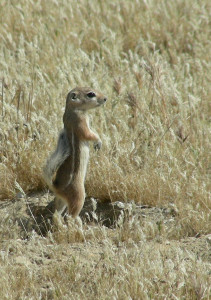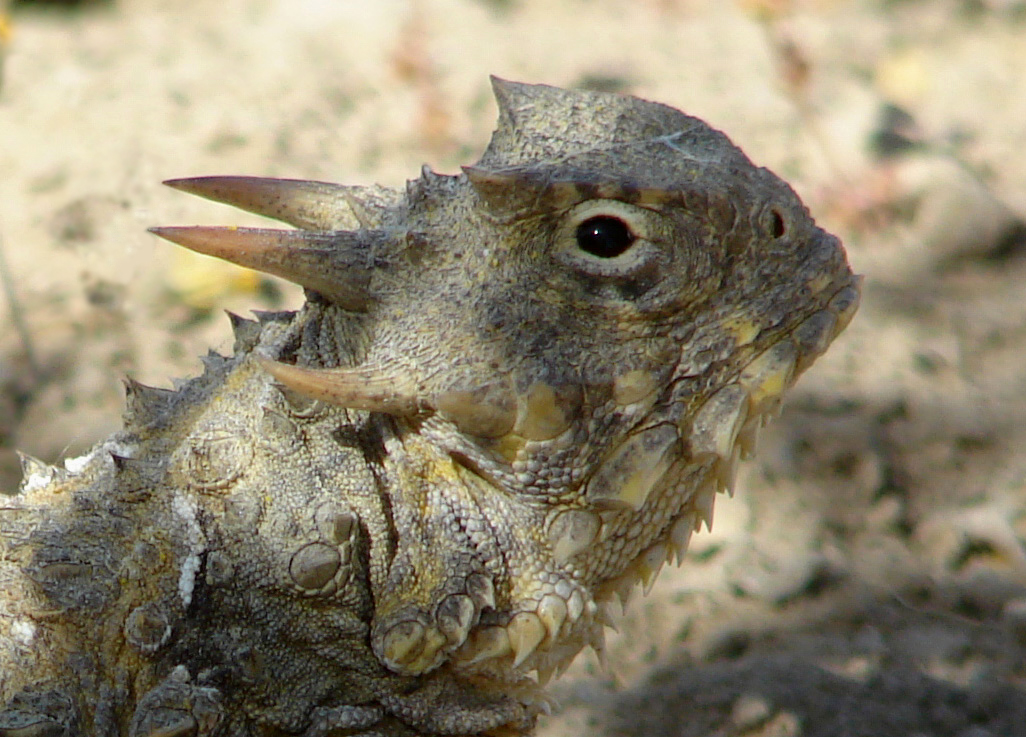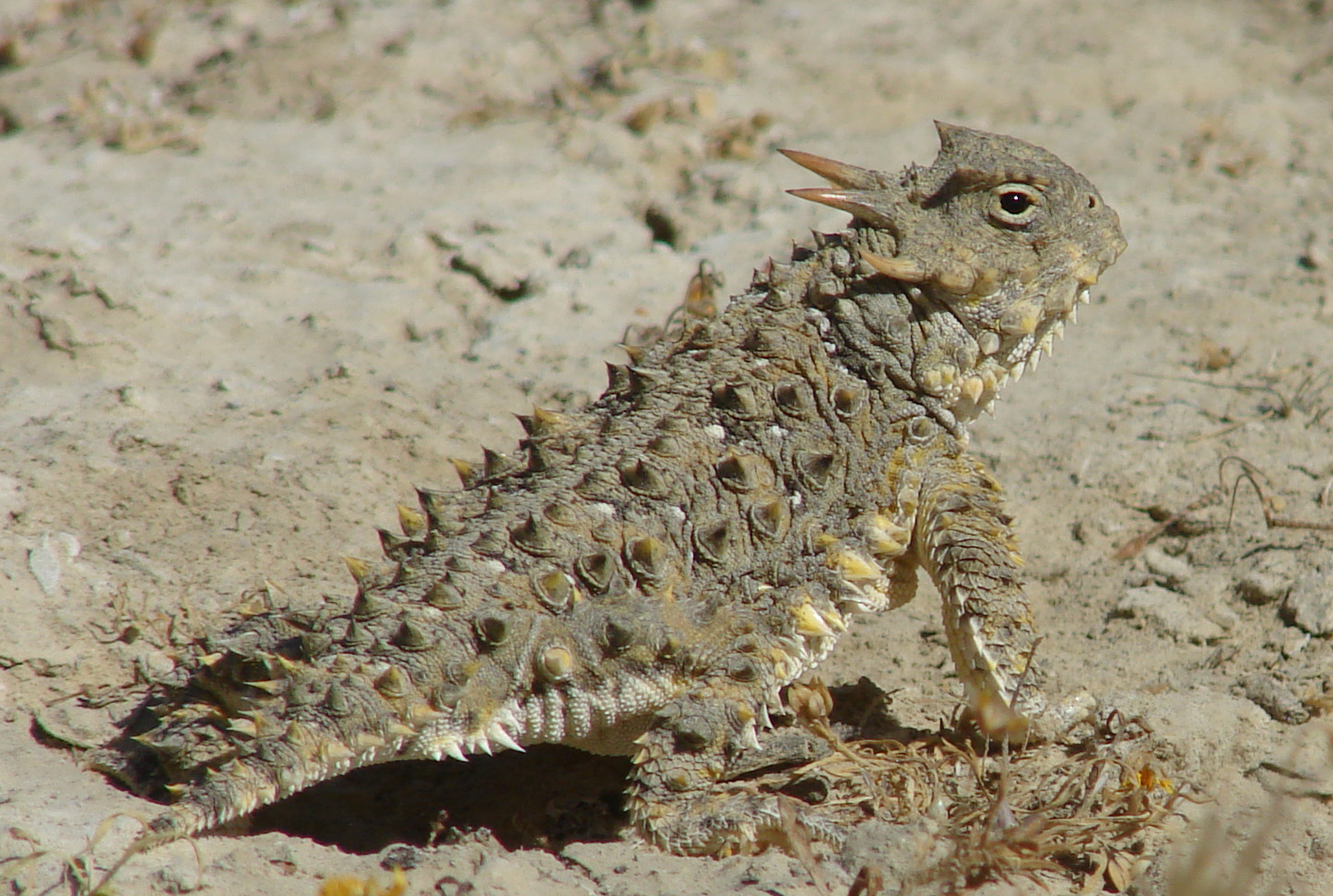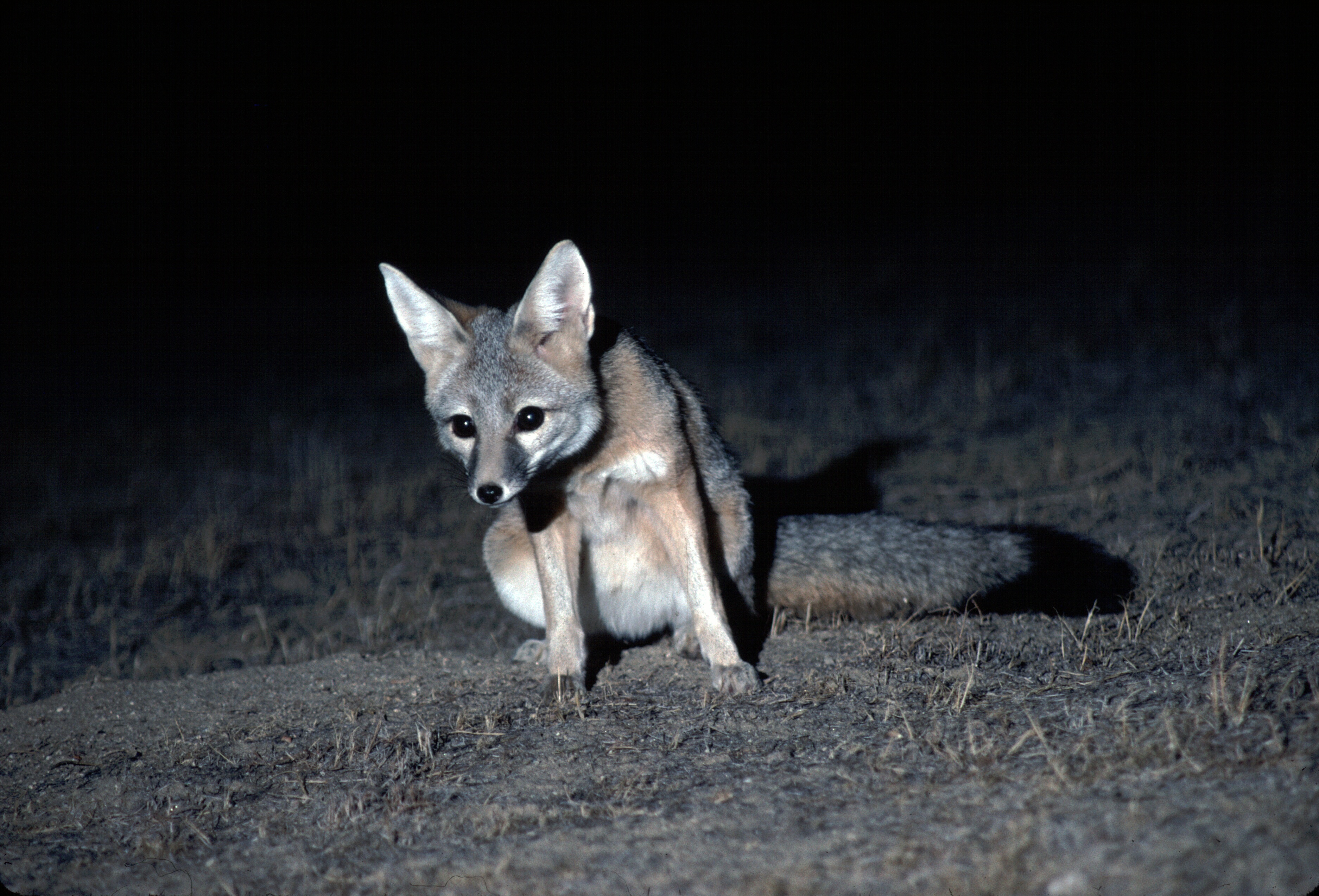
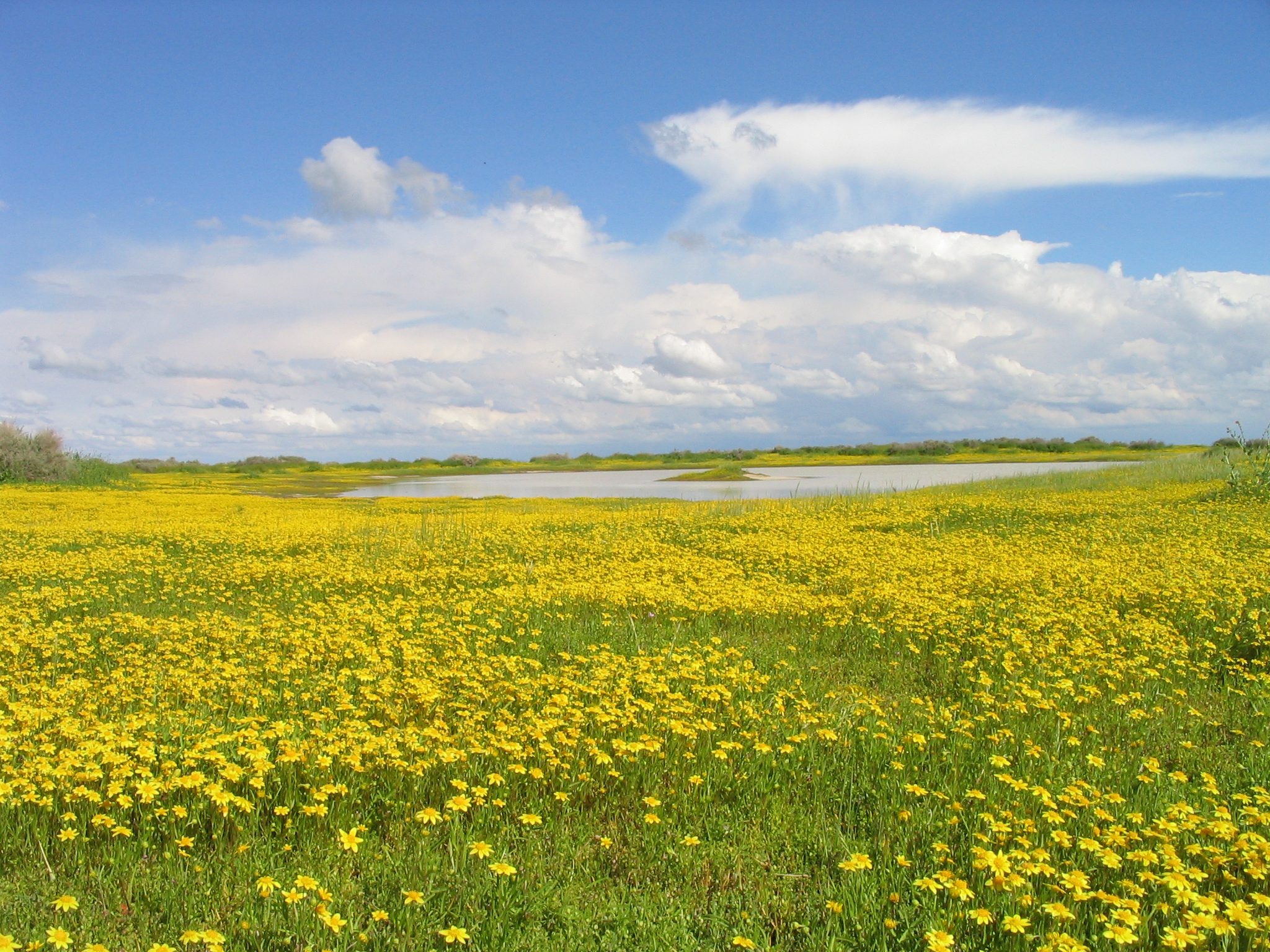
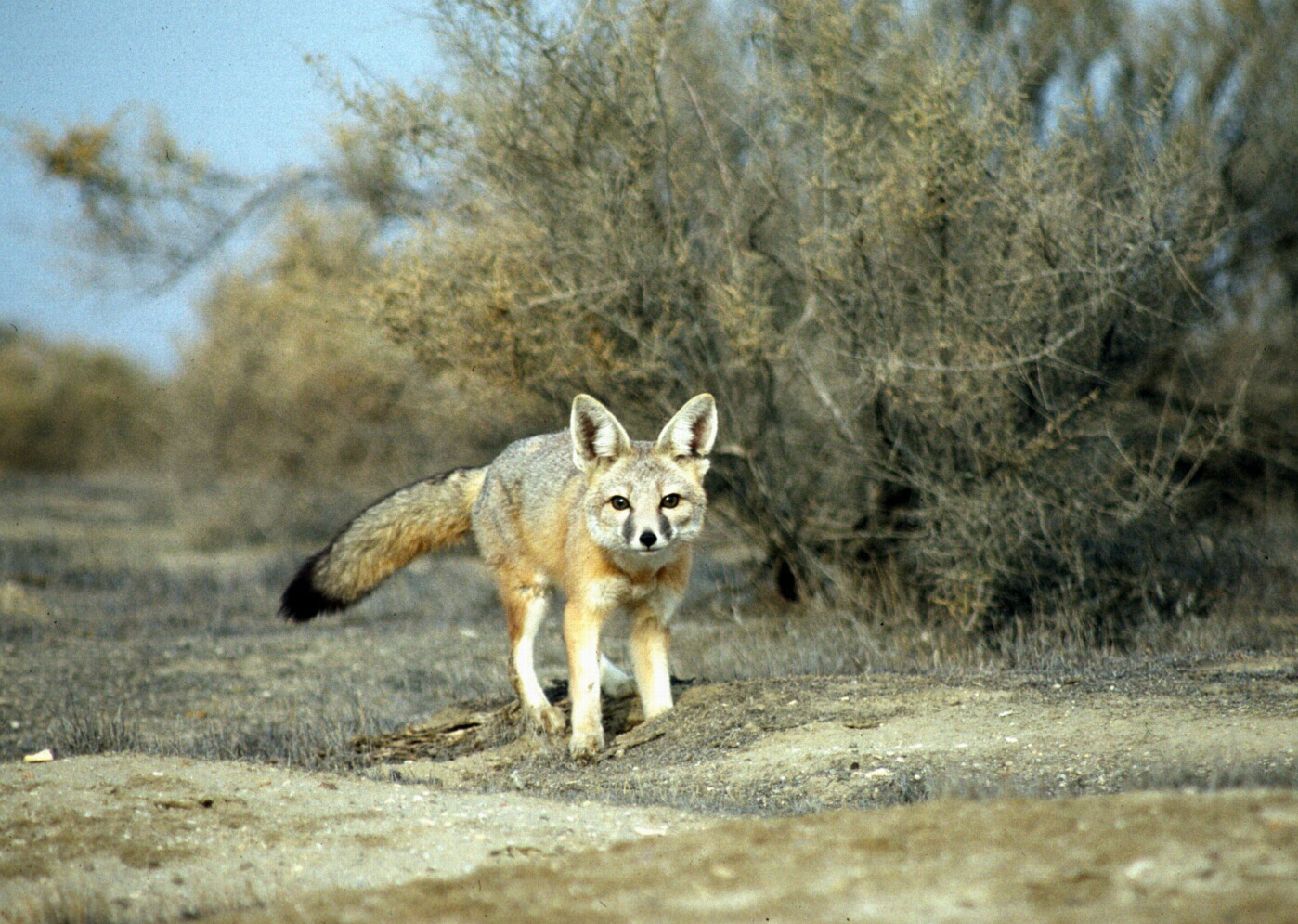
Area: 3,700 acres
Location: 15 miles NW of Wasco, Kern County, California
Date Acquired: 1968-2010
Acquisition Type: Center for Natural Lands Management owns the preserve. We protect and manage species and habitats on the preserve in perpetuity.
Key Habitats: Alkali Desert Scrub and California Annual and Perennial Grassland
Species of Special Interest to CNLM: San Joaquin kit fox (Vulpes macrotis mutica), Giant kangaroo rat (Dipodomys ingens), Tipton kangaroo rat (Dipodomys nitratoides nitratoides), San Joaquin antelope squirrel (Ammospermophilus nelsoni) and Blunt-nosed leopard lizard (Gambelia sila)
Introduction
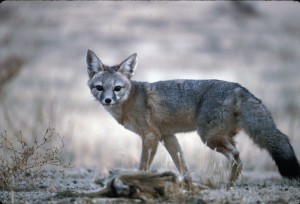 The first parcel (39 acres) at the Semitropic Ridge Preserve was acquired in 1968 as a wildflower preserve. This original parcel was purchased with money from the estate of Paul S. Paine, an oil field worker that enjoyed the rich display of wildflowers during his trips across the valley in the spring. Since then more than 3,600 acres have been added to the Preserve, acquired mostly through mitigation funds associated with development projects under regulatory authority of the California Energy Commission, U.S. Fish and Wildlife Service and California Department of Fish and Wildlife. Most of the parcels in the Semitropic Ridge Preserve were acquired to provide habitat for several threatened or endangered species including San Joaquin kit fox (Vulpes macrotis mutica), blunt-nosed leopard lizard (Gambelia sila), Tipton kangaroo rat (Dipodomys nitratoides nitratoides) and the San Joaquin antelope squirrel (Ammospermophilus nelsoni).
The first parcel (39 acres) at the Semitropic Ridge Preserve was acquired in 1968 as a wildflower preserve. This original parcel was purchased with money from the estate of Paul S. Paine, an oil field worker that enjoyed the rich display of wildflowers during his trips across the valley in the spring. Since then more than 3,600 acres have been added to the Preserve, acquired mostly through mitigation funds associated with development projects under regulatory authority of the California Energy Commission, U.S. Fish and Wildlife Service and California Department of Fish and Wildlife. Most of the parcels in the Semitropic Ridge Preserve were acquired to provide habitat for several threatened or endangered species including San Joaquin kit fox (Vulpes macrotis mutica), blunt-nosed leopard lizard (Gambelia sila), Tipton kangaroo rat (Dipodomys nitratoides nitratoides) and the San Joaquin antelope squirrel (Ammospermophilus nelsoni).
Conservation Significance
The major vegetative associations at Semitropic Ridge include valley saltbush scrub and valley sink scrub. Valley saltbush scrub is found within the relatively well-drained soils at slightly higher elevations and dominant shrubs include spiny (Atriplex spinifera) and common saltbush (Atriplex polycarpa). Valley sink scrub is found in the heavier clay soils and the dominant shrubs include iodinebush (Allenrolfea occidentalis) and seepweed (Suaeda moquinii). Common grasses and flowering plants include goldfields (Lasthenia spp.), pepperweed (Lepidium spp), red brome (Bromus madritensis ssp. rubens), red-stemmed filaree (Erodium cicutarium), and tarweed (Hemizonia pungens). After a series of wet years, non-native grasses can become relatively dense and dominate the herbaceous vegetation. Wildfires occur periodically and have converted hundreds of acres of scrub to an open grassland type that is largely devoid of shrubs. Alkali playas and scalds are interspersed throughout much of the Preserve and are characterized by bare ground with deposits of white, crusty soil. During wet winters and springs, many of the playas fill with water for several weeks. The Lokern Preserve provides habitat for a variety of additional species of conce
rn, including Blainsville’s horned lizard (Phrynosoma blainvillii), burrowing owl (Athene cunicularia), LeConte’s thrasher (Toxostoma lecontei), tri-colored blackbird (Agelaius tricolor), and Tulare grasshopper mouse (Onychomys torridus tularensis).
Semitropic Ridge Preserve together with adjacent natural lands forms one of the largest natural remnants of the San Joaquin Valley. The western border of the Preserve is contiguous with the Northern Semitropic Ridge Ecological Reserve, owned by the California Department of Fish and Wildlife. The Kern National Wildlife Refuge is approximately 5 miles north of the Preserve.
Our Work
The overall management objective at Semitropic Ridge is to maintain a functioning ecosystem that supports the threatened and endangered species for which the Preserve was established. Since these species are desert-adapted, special emphasis is placed on maintaining a relatively sparse herbaceous cover. In wet years, CNLM enters into grazing agreements with local livestock operators to create a more open habitat structure favored by leopard lizards, kangaroo rats, kit foxes and antelope squirrels. On previously burned lands, methods of re-establishing native shrubs are being evaluated. A suite of trophic levels is monitored annually on the Preserve to provide increased understanding of the system and to evaluate the success of management strategies.
Management of the Lokern Preserve is the responsibility of CNLM.
Public Access
Please contact the preserve manager for information about public access.
Contact
For more information about Semitropic Ridge Preserve or Center for Natural Lands Management, please contact Greg Warrick, Preserve Manager at gwarrick@cnlm.org or 760.731.7790 extension 202


